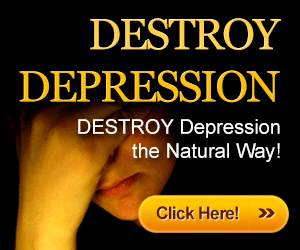Mental health challenges are becoming increasingly common in today’s fast-paced world, and two of the most widespread conditions people struggle with are anxiety and depression. These issues often appear together, creating a cycle of overwhelming thoughts, emotional exhaustion, and physical symptoms that interfere with daily life. Understanding anxiety depression treatment is essential for anyone seeking long-term relief, improved well-being, and a return to emotional balance. This comprehensive guide explores the causes, symptoms, and evidence-based solutions that can help restore mental clarity and resilience.
Understanding the Connection Between Anxiety and Depression
Although anxiety and depression are different conditions, they frequently occur together. Anxiety typically involves excessive worry, restlessness, and physical tension, while depression brings feelings of sadness, hopelessness, low energy, and reduced interest in life. When both exist simultaneously, they often intensify each other. This combination creates a cycle where constant worry drains emotional energy, and emotional exhaustion increases fear and sensitivity to stress.
Recognizing how these conditions reinforce one another is an important first step in finding the most effective anxiety depression treatment. A comprehensive approach often leads to the best results, especially when symptoms are persistent or interfere with everyday functioning.
Common Causes and Risk Factors
There is no single cause for anxiety or depression. Instead, a combination of factors contributes to their development:
Genetics and family history
Chronic stress or unresolved trauma
Hormonal changes
Major life transitions
Poor sleep or exhaustion
Certain medical conditions
Imbalanced neurotransmitters
Lack of social support
Understanding the root cause helps individuals and healthcare professionals choose the most appropriate path toward recovery.
Recognizing Symptoms That Require Attention
Many people experience mild anxiety or occasional sadness, but when certain symptoms become persistent or overwhelming, it may indicate the need for focused anxiety depression treatment. Some key symptoms include:
Constant worry or racing thoughts
Lack of motivation or energy
Difficulty concentrating
Persistent sadness or irritability
Sleep problems such as insomnia
Feeling on edge or restless
Loss of interest in hobbies or relationships
Changes in appetite or weight
Physical symptoms like headaches or stomach issues
The earlier symptoms are identified, the easier it becomes to manage them effectively.
Evidence-Based Anxiety Depression Treatment Approaches
Modern mental health care provides a wide range of treatment options supported by research. Most people benefit from a combination of methods tailored to their unique needs.
1. Cognitive Behavioral Therapy (CBT)
CBT is widely recognized as one of the most effective approaches for treating anxiety and depression. It focuses on identifying destructive thought patterns and replacing them with healthier, more realistic ones. CBT provides practical tools that help individuals regain control over their emotional responses.
2. Medication When Needed
Some individuals may benefit from medication, especially when symptoms are moderate to severe. Antidepressants and anti-anxiety medications help stabilize brain chemistry and reduce overwhelming symptoms. Medications are often paired with therapy to support long-term mental wellness.
3. Mindfulness and Meditation Practices
Mindfulness techniques help anchor the mind in the present moment and reduce repetitive negative thinking. Meditation lowers stress hormones, improves emotional regulation, and builds mental strength. For many people, mindfulness becomes an essential part of their anxiety depression treatment plan.
4. Regular Physical Activity
Exercise has a powerful impact on brain chemistry. It boosts serotonin, dopamine, and endorphins—natural substances that improve mood. Even simple activities like walking, stretching, or cycling can significantly reduce anxiety and depression symptoms.
5. Improving Sleep Patterns
Poor sleep and mental health are deeply connected. Establishing a consistent sleep routine, reducing screen time before bed, and creating a relaxing nighttime environment can dramatically improve emotional stability.
6. Strengthening Nutrition and Gut Health
Research shows that gut health influences mood and mental clarity. Foods rich in omega-3s, magnesium, probiotics, and antioxidants support the brain and help reduce mood instability. Avoiding high sugar intake and excessive caffeine can also prevent anxiety spikes.
7. Building a Support Network
Being able to talk with friends, family, or support groups reduces feelings of isolation. Sharing experiences helps individuals see they are not alone and encourages hope during difficult times.
8. Journaling for Emotional Processing
Writing down thoughts and emotions allows the mind to release built-up worry and stress. Journaling can reveal patterns, triggers, and solutions that may not be obvious in daily life.
9. Relaxation Practices
Techniques such as deep breathing, progressive muscle relaxation, yoga, aromatherapy, and warm baths help calm the nervous system. These gentle methods complement more structured anxiety depression treatment strategies.
Lifestyle Changes That Support Recovery
Beyond formal treatment, daily habits greatly influence mental well-being. Consistency is key. Building small but meaningful habits such as:
Spending time in sunlight
Setting healthy boundaries
Taking regular breaks during the day
Limiting exposure to stressful news
Practicing gratitude
Engaging in hobbies or creative outlets
These lifestyle changes gradually strengthen emotional resilience and reduce the intensity of anxiety and depression symptoms.
When to Seek Professional Help
If symptoms become severe, interfere with daily responsibilities, or cause thoughts of self-harm, immediate professional support is essential. Mental health professionals can create personalized anxiety depression treatment plans that address both the emotional and physical components of these conditions. Seeking help is a sign of strength—not weakness.
Long-Term Outlook and Hope for Healing
With the right tools, support, and consistent effort, recovery is absolutely possible. Millions of people overcome anxiety and depression and go on to live fulfilling, joyful lives. What matters most is taking the first step, staying patient with yourself, and recognizing that healing is a journey, not a race.



